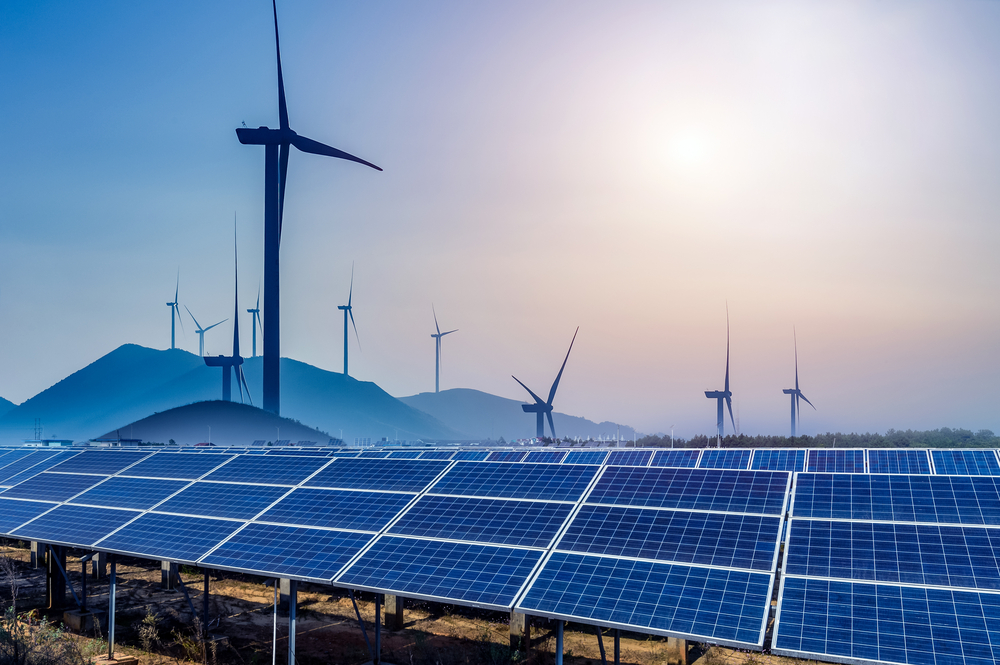Today, investors are increasingly considering climate risks and opportunities – alongside more traditional financial metrics – related to their holdings. In our view, however, the focus of these efforts is unfortunately unduly lopsided; Europe and the US get the bulk of the attention whereas emerging markets, and China in particular, are somewhat cast aside.
China is one of the largest emitters of GHG1 and highly exposed to climate risks.
The country is also the world’s largest investor in climate transition technologies and controls vast swathes of key supply chains.
We argue that perhaps more than in other regions, economic self-interest will dictate sizeable future investments.
In China, in particular, risks and opportunities arising from climate change are intrinsically interlinked.
Investors need to develop a thorough understanding for both.
This is even more true given the outsize role that China already plays in the global economy, its political clout on the world stage and the fact that it is now the largest emitter of GHG. At the same time, the country is also by far the biggest investor in the green transition and controls large swathes of the supply chains for key future technologies.
We believe that in China – perhaps more so than in most other regions – climate risks and opportunities uniquely align to represent two sides of the exact same coin. And as investors, we unquestionably cannot afford not to be acutely aware of either.
Historic cumulative versus current emissions
First, it is the cumulative, and not ongoing emissions, that matter. Climate change and the rise in global temperature depend on the stock of GHG in the atmosphere, not the addition in any given year.
Historically, industrialised nations have released significantly larger amounts of greenhouse gases into the atmosphere than developing nations. The US alone is responsible for some 20% of the global total emitted between 1850 and 2021, which in turn is estimated to have contributed 0.2°C to global warming so far.2
Production-based versus consumption-based
The second layer of the argument poses the question: “Who bears the ultimate responsibility for certain emissions?” A consumption-based approach essentially looks at the emissions generated to provide a certain product or service within a country, whereas the more traditional production-based approach only considers emissions generated within the physical borders of a country.
And so, even as developing nations are catching up fast and are poised to surpass their industrialised peers in terms of current GHG emissions, many of these emissions occur to satisfy demand for products and services ultimately consumed in developed markets.
Total emissions versus per-capita emissions
The third layer is perhaps the most obvious one. Whenever nations like China, India or Indonesia will eventually equalise the US or Europe’s cumulative emissions, they will still have done far less damage to the world’s climate on a per-capita basis.
Consider this: The US, the EU27 and the UK combined are responsible for just under 50% of total cumulative emissions – at less than one-tenth of the world’s population. Therefore, taken together, these three layers could make for a rather convincing and perhaps convenient moral argument that emerging markets need not be too concerned about taking climate action.
Developing nations stand to lose more
We argue that China has a vital economic self-interest in tackling climate change, and that it is not by accident that in recent years the government has taken a global lead in the matter. Current science predicts that rising temperatures and changes in precipitation patterns will impact precisely those nations that are less responsible the most, and many industrialised economies could get away – not unscathed – but relatively better.3
Some 65% of Chinese trade is conducted through the South China Sea and many of the country’s critical ports lining the coast could be negatively impacted.4 China is particularly vulnerable to sea level rises due to its low elevation and coastal geology.5
In fact, the country ranks thirteenth globally in terms of exposure to flooding (including riverine, flash and coastal) and sixth in terms of cyclone risks. Albeit slightly lower, it also has significant exposure to droughts.6
To make matters worse, many of China’s top trading partners – among them Hong Kong, Japan, Vietnam and South Korea7 – are themselves relatively exposed to similar physical climate risks.
Two pieces of good news
Many of the worst-case scenarios can be prevented, and China is wasting no time. The World Bank concludes that the country’s “advanced technological capabilities mean the pathway to carbon neutrality will open new avenues for development.
In fact, with well over a quarter trillion dollars, China’s investments into climate transition technologies surpass the next six largest players combined.1
The power of the market
To achieve our climate targets – namely the goal of limiting global warming to 1.5°C as enshrined in the 2015 Paris Agreement – a concerted effort is needed. Because climate risks affect everybody, no stakeholder can be exempt. Governments, private businesses and individuals alike – we are all on the hook. The finance industry, as the custodian and intermediary of the enormous sums of money needed to facilitate the transition, has a particular responsibility. But as we have laid out, it is as much an economic self-interest as it is a moral obligation.
Climate risk analytics have come a long way from their beginnings, with more accurate models, vastly improved granularity, better quality data and reporting, and more stringent regulation.
Climate benchmarks such as the EU-implemented Climate Transition Benchmark (CTB) and Paris-Aligned Benchmark (PAB) provide orientation and have been made investable by both active and passive vehicles.
Capital markets are increasingly adapting to price risks that traditional finance tended to ignore. As investors, we can – and must – take advantage of these developments in several ways by decarbonising and future-proofing our portfolios for greater resilience and opportunities – and support the climate transition at the same time.
Explore the low-cost Emerging Markets ETFs from Franklin Templeton and discover the Franklin MSCI China Paris-Aligned Climate UCITS ETF
Marcus Weyerer is senior ETF investment strategist at Franklin Templeton
This article first appeared in ETF Insider, ETF Stream's monthly ETF magazine for professional investors in Europe. To read the full magazine, click here.
1 A greenhouse gas (GHG or GhG) is a gas that absorbs and emits radiant energy at thermal infrared wavelengths, causing the greenhouse effect. 2 Source: CarbonBrief Analysis, “Which countries are historically responsible for climate change?”, October 5, 2021. 3 Source: World Economic Forum, January 2023. 4 Source: Association of Accredited Public Policy Advocates to the European Union, 2021. 5 Source: The potential impact of rising sea levels on China’s coastal cultural heritage: a GIS risk assessment, Cambridge University Press, 2022. 6 Source: World Bank, Climate Change Knowledge Portal, 2021. 7 Those four countries account for over one quarter of Chinese exports, World Integrated Trade Solution, 2020.



